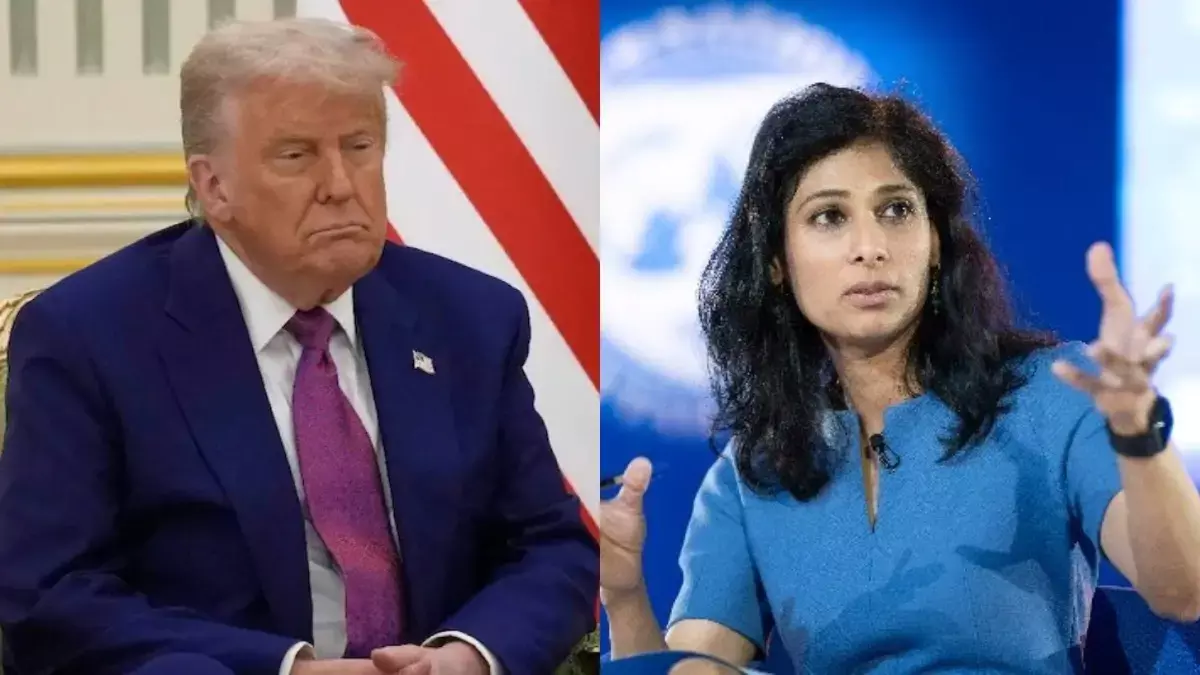Gita Gopinath Slams Trump’s Tariff Policy: 6 Months On, A “Negative Scorecard” for U.S. Trade Strategy
Six months after Trump’s “Liberation Day” tariffs, Gita Gopinath says U.S. consumers are paying the price. Inflation is up, manufacturing stagnant, and trade balance unchanged.
Gita Gopinath Slams Trump’s Tariff Policy: 6 Months On, A “Negative Scorecard” for U.S. Trade Strategy

Six months after the U.S. launched its sweeping “Liberation Day” tariffs, renowned economist Gita Gopinath has offered a sharp critique — and the results, she says, are largely negative.
In a post on X (formerly Twitter), the Harvard Professor and former IMF Chief Economist posed a simple question:
“It’s been six months since Liberation Day tariffs. What have U.S. tariffs accomplished?”
Her answer — not much good.
“A Tax on Americans Themselves”
According to Gopinath, while government revenues have risen, the cost is being borne almost entirely by U.S. firms and consumers, effectively functioning as a domestic tax rather than a penalty on foreign nations.
She pointed out that inflation has edged higher, particularly for home appliances, furniture, and coffee — goods hit hardest by the tariffs. Despite the policy’s intent, U.S. manufacturing has shown no real signs of revival, and the trade balance remains unchanged.
“Overall, the scorecard is negative,” Gopinath summarized bluntly.
The Tariff Breakdown
On April 2, 2025, President Donald Trump announced a new round of tariffs — up to 50% on imports from countries like India and Brazil, and a staggering 100% on patented pharmaceutical drugs.
The move, branded as an effort to “reclaim American manufacturing,” was accompanied by Trump’s fiery declaration that the U.S. had been “looted and plundered” by global trade partners.
The administration claimed these tariffs, along with tax cuts and private sector investments, would trigger a manufacturing renaissance.
Trump’s $17 Trillion Investment Claim
In recent speeches, Trump has touted a figure of $17 trillion in new investment commitments — money he says is flowing into factories, technologies, jobs, and innovation as a direct result of his economic policies.
“Under eight months of Trump, we’ve already secured commitments of $17 trillion coming in,” the president said last month. “There’s never been any country that’s done anything like that.”
However, no detailed breakdown has been provided for the $17 trillion estimate. According to an AP report, the White House’s official website lists total investments at $8.8 trillion, a number that appears to include commitments made under President Joe Biden’s administration as well.
What’s Next for U.S. Trade Policy?
Economists warn that if current trends continue, the tariff-driven inflation and lack of industrial gains could undermine the very goals Trump set out to achieve.
Gopinath’s “negative scorecard” echoes concerns shared by other global economists — that protectionism may end up costing Americans more than it helps them.

